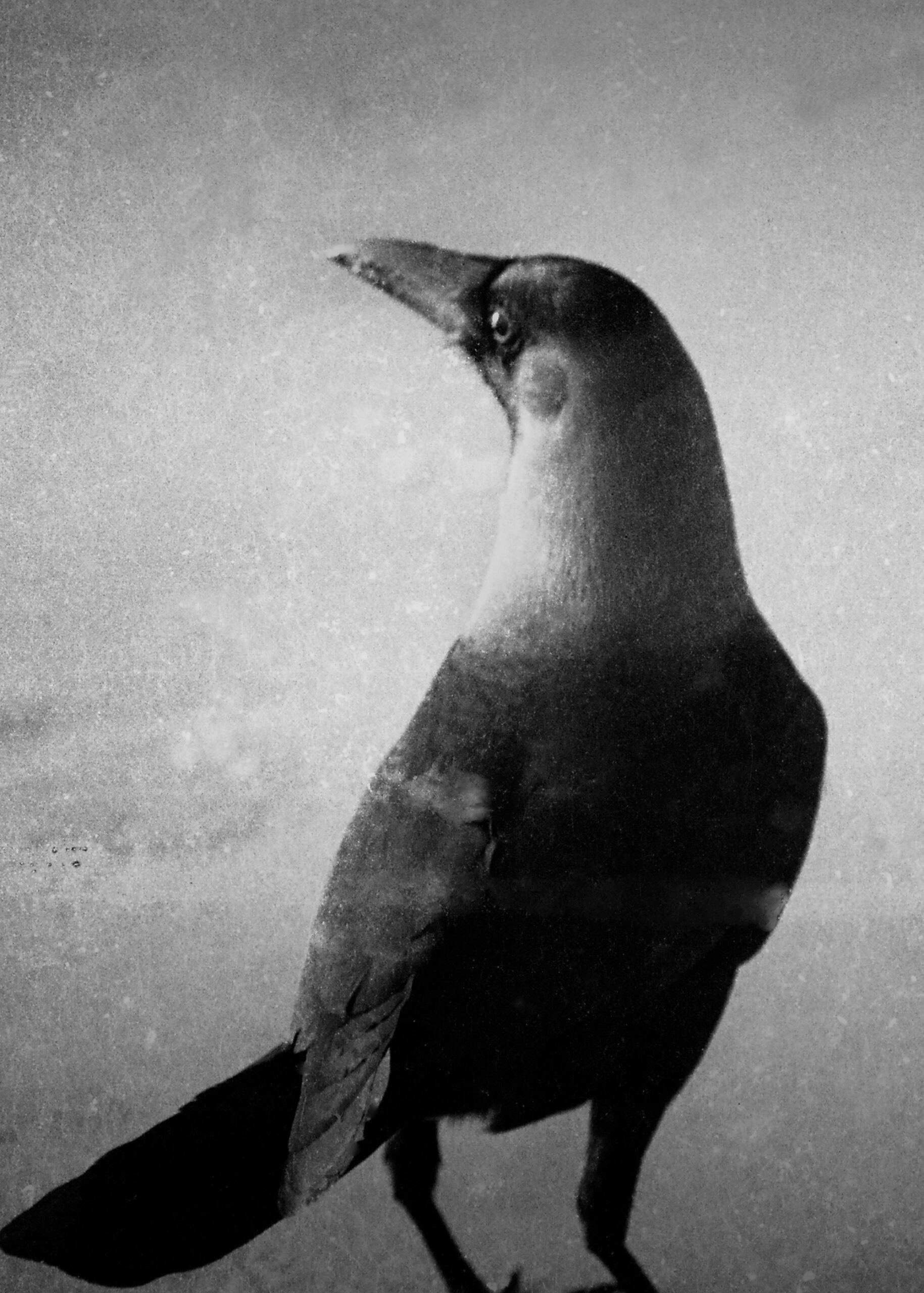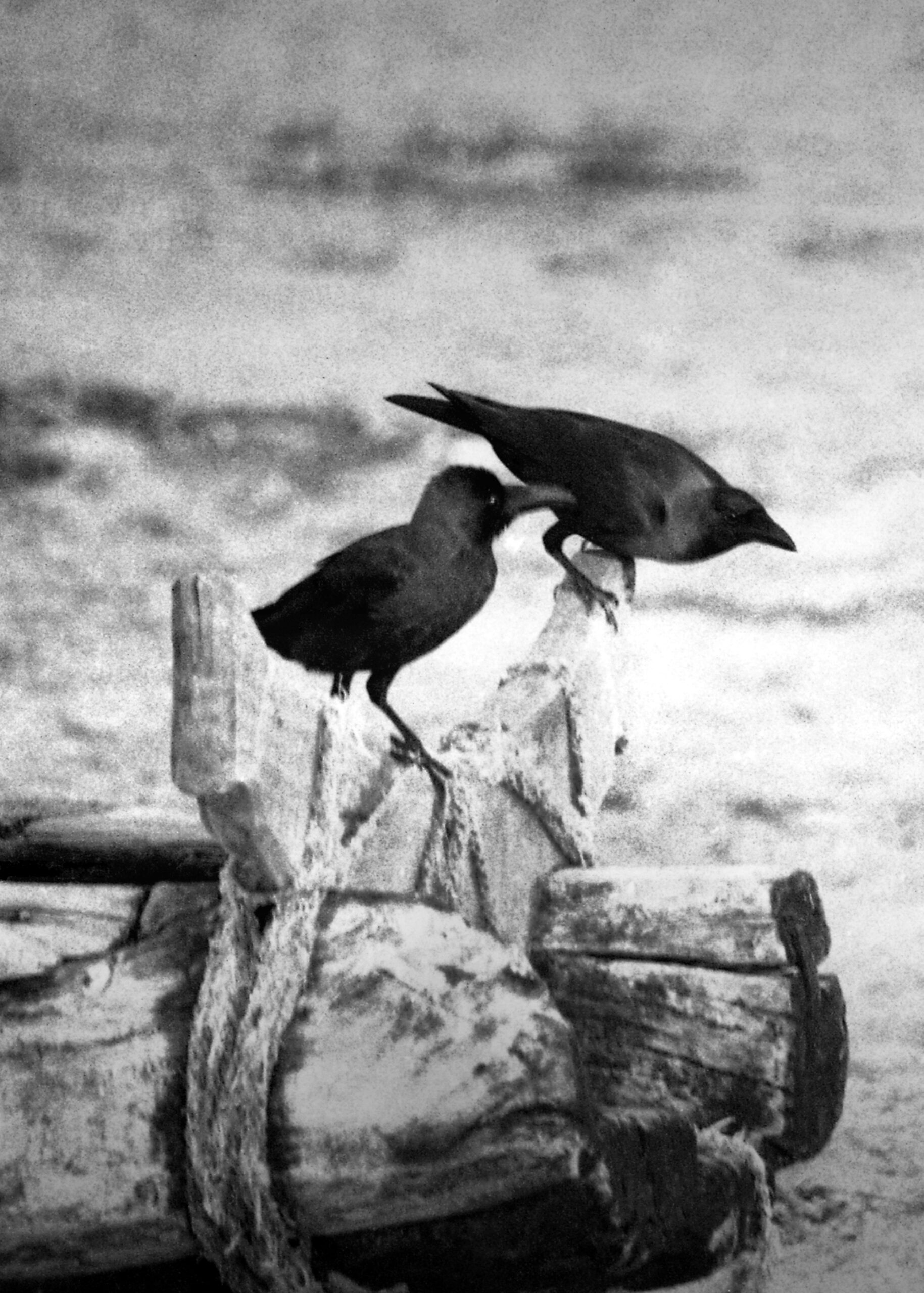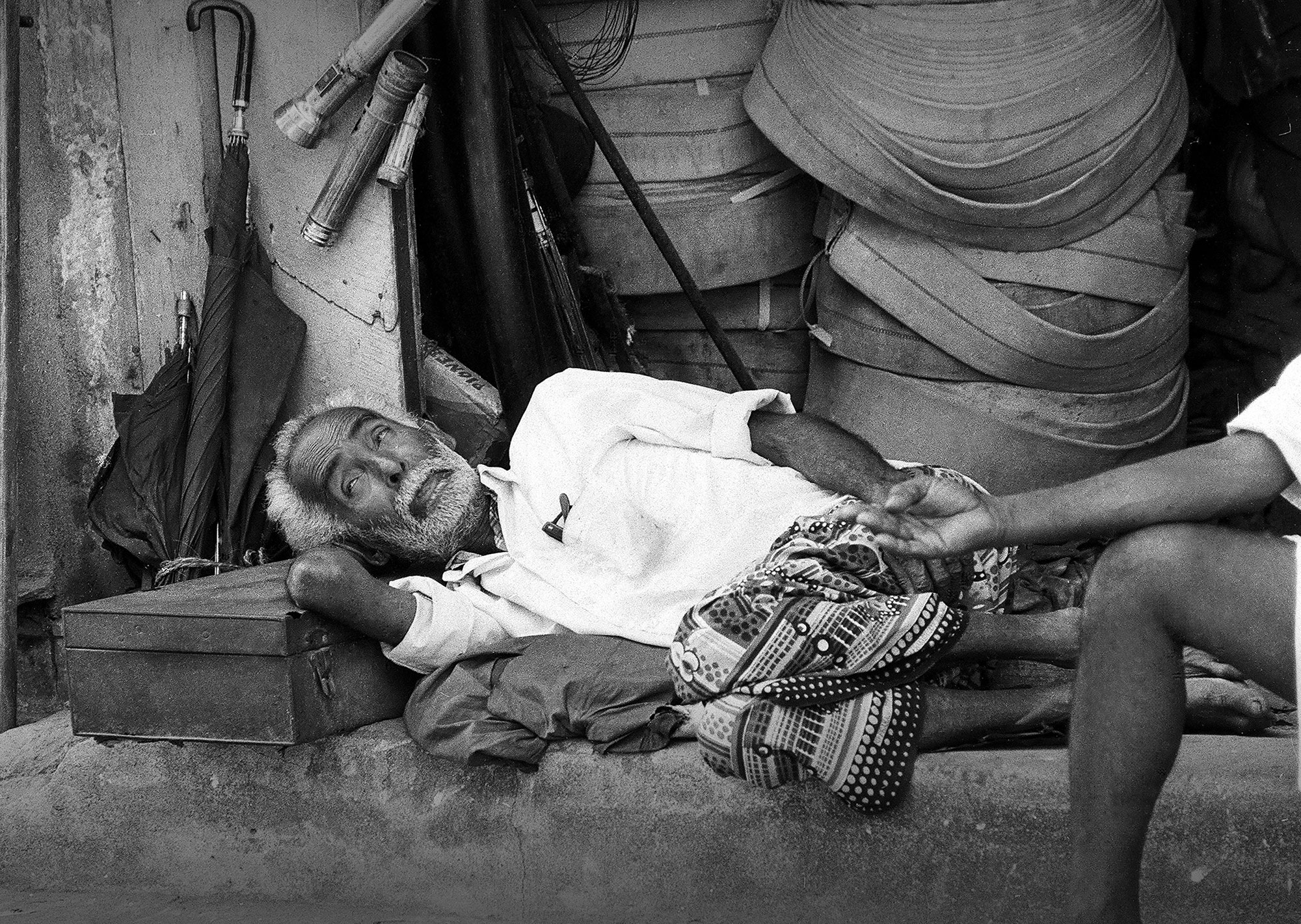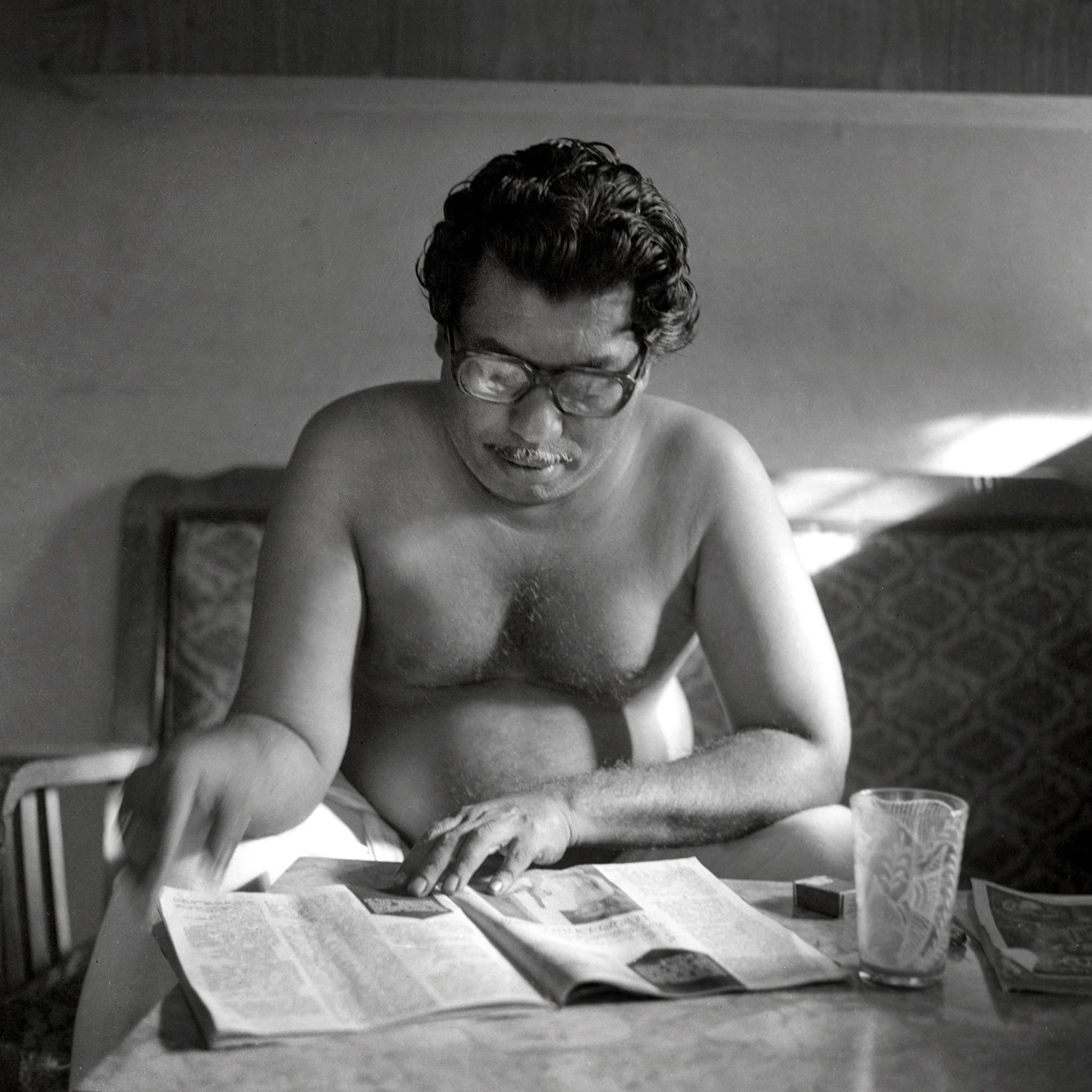Panorama
Digital Moon
and
Analogue
Nights
Photo Mail presents
A panoramic view of
The art of photography’s
Interaction and
Interrelation with other
Art mediums such as literature
Architecture, and
Other visual media
In this autobiographical
memoir Abul Kalam Azad
discusses his versatile journey
as a photo-artist, drawing
parallels to the socio-political
context, personal history
and art. The acclaimed
pieces were originally
published in the popular
Malayalam journal
Deshabhimani for
over a year (2019 – 2020)
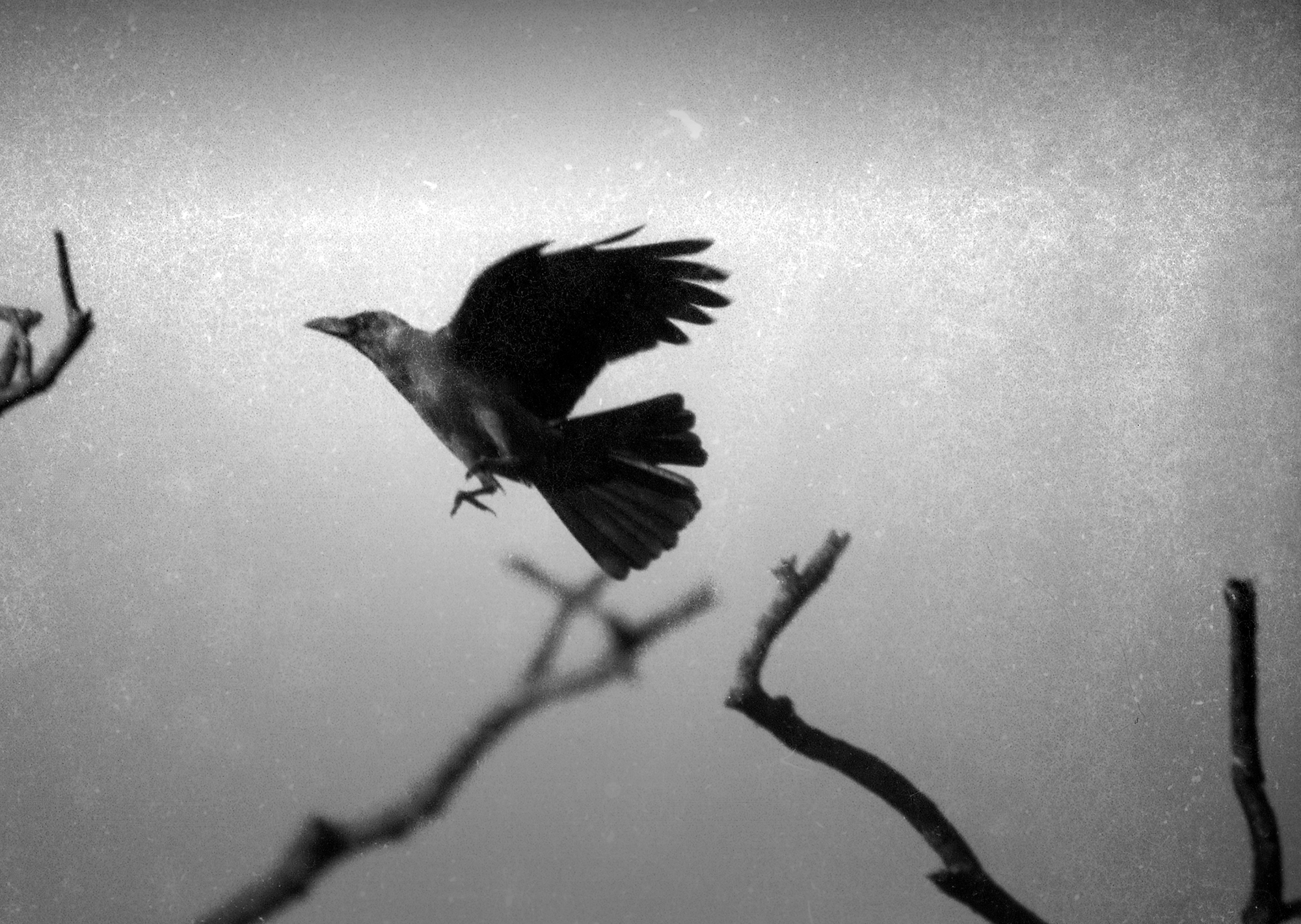
The Crow © Abul Kalam Azad 1980s
Most of the photographers, at some point in their lives, develop an irresistible interest in capturing wildlife and nature, and I was no exception. Traveling into the woods, I focused my lens towards the wonders of nature during my early career, when I was young. Whenever I got bored with event and street photography, I ventured into the woods. A friend of mine was working as a forest officer and through him, I accessed the wildest of jungles. I was already fascinated by travel and trekking; and the wilderness had its rewarding charm.
However, I took no time to realize the drawbacks of nature and wildlife photography. This genre of photography builds on the adventurous spirit of humans. Encountering a wild elephant or watching a bird mate gives an idea of the secret life these voiceless and vulnerable creatures live on their own. Like a peeping Tom or a hunter, one has to wait discretely for a sensational and sensual moment that would draw the world’s attention.
Another personal disillusionment was that the wildlife photographs seemed to be mere photo souvenirs – for me, it eroticized a place and its happenings. I also felt an element of typical machoism – a sort of taken for granted objection-free rights over the life of another. Whenever one explores the unexplored areas of a jungle, a human trail is left behind. In spite of a responsible approach, in whatever level, there is always an effect on the ecosystem, often a disturbance of the perfect balance with which nature interacts and intersects. I am aware that there are certain photographers who sensitively, aesthetically and authentically use nature and wildlife in their artwork. And, of course, there is research and academic need, but most photographers opt for this as an adventure and a hobby. Besides, the market value for wildlife photographs is quite high. To sum up, I found it unethical and immoral.
Later on, I realized that there is no special advantage in going to their habitats and discreetly capturing their lives. It’s also to be stated that I had this undying urge to carve a niche for myself in photography. My lack of academic training in photography meant that its nuances weren’t delivered on a plate to me. I had to practice photography’s different approaches and it was mostly trial and error. Based on the experiential learning and unlearning, I often had to change the course and dig my path. That’s how I started shooting my surroundings. I tried to provide a re-reading of familiar subjects, objects and people.
The Crow © Abul Kalam Azad 1980s
Animals and birds in mythology and religion were one of the themes that interested me a lot. Some of these animals are taboos, while the others are totems. During the 1980s, I started photographing crows. Well, crows are very ordinary birds with zero exotic aura attached to them. Neither are they endangered. In Kerala, they are a common sight in any given village or urban settings. In iconography, a crow symbolizes death and immortality; they are considered as carriers of dead souls. Shani, the medieval-era deity whose Vahana is a crow is considered an inauspicious harbinger of bad luck. This negative stereotype shrouds the otherwise shrewd, intelligent and active bird.
Of course, these crow photographs of mine have never been published or exhibited. Probably, because of the overfamiliarity, photographs of crows do not draw public attention. Almost always, people have been attracted to graphic, exotic and scenic images. It could also be the fetishism and nostalgia of the Malayali intelligentsia to confine photographic visuals within the purview of the literature they are exposed to.
My decision to shoot the crows was an early attempt to deconstruct the mainstream perceptions and perspectives. It was only much later that I saw the impressive drawings of common crows by famous cartoonist RK Laxman. Almost like an obsession, over the period, he had created several drawings of crows. He had said, “I drew objects that caught my eye outside the window of my room—the dry twigs, leaves and lizard-like creatures crawling about, the servant chopping firewood and, of course, the number of crows in various postures on the rooftops of the buildings opposite.” In fact, RK Laxman was drawing the utmost familiar life around him.
Photographs can make familiar objects, places, and people more familiar. Everyday mundane encounters and banal objects, when photographed, instill an interest in its viewer to observe the ignored. For, when we look at familiar objects, again and again, it reveals something or the other that was not seen during the first instance. What began as a simple practice to capture the familiar, eventually led me to fathom the mythological and sociological constructs around the totemic and epic animals. Eventually, I started consciously incorporating them as conceptual symbols in my art.
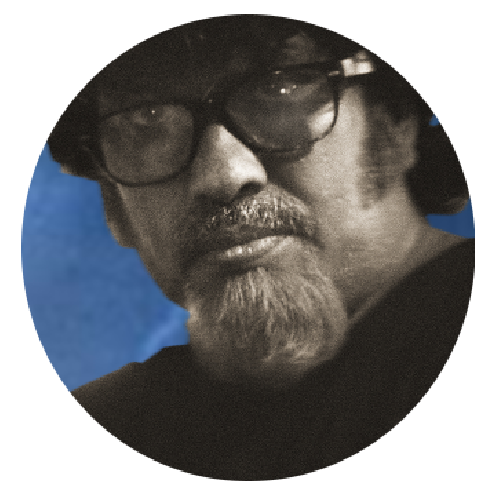
Abul Kalam Azad is an established contemporary Indian photographer, noted for his maverick experimental and conceptual works. He is the Founder Chairman of Ekalokam Trust for Photography. Abul’s photographic works are predominantly autobiographical and explore the areas of politics, culture, contemporary micro-history, gender, and eroticism. His works attempt a re-reading of contemporary Indian history – the history in which ordinary people are absent and mainly provided by beautiful images and icons. To see more works of Abul Kalam Azad check his website.
Published on September 29, 2021
Share
Related Articles
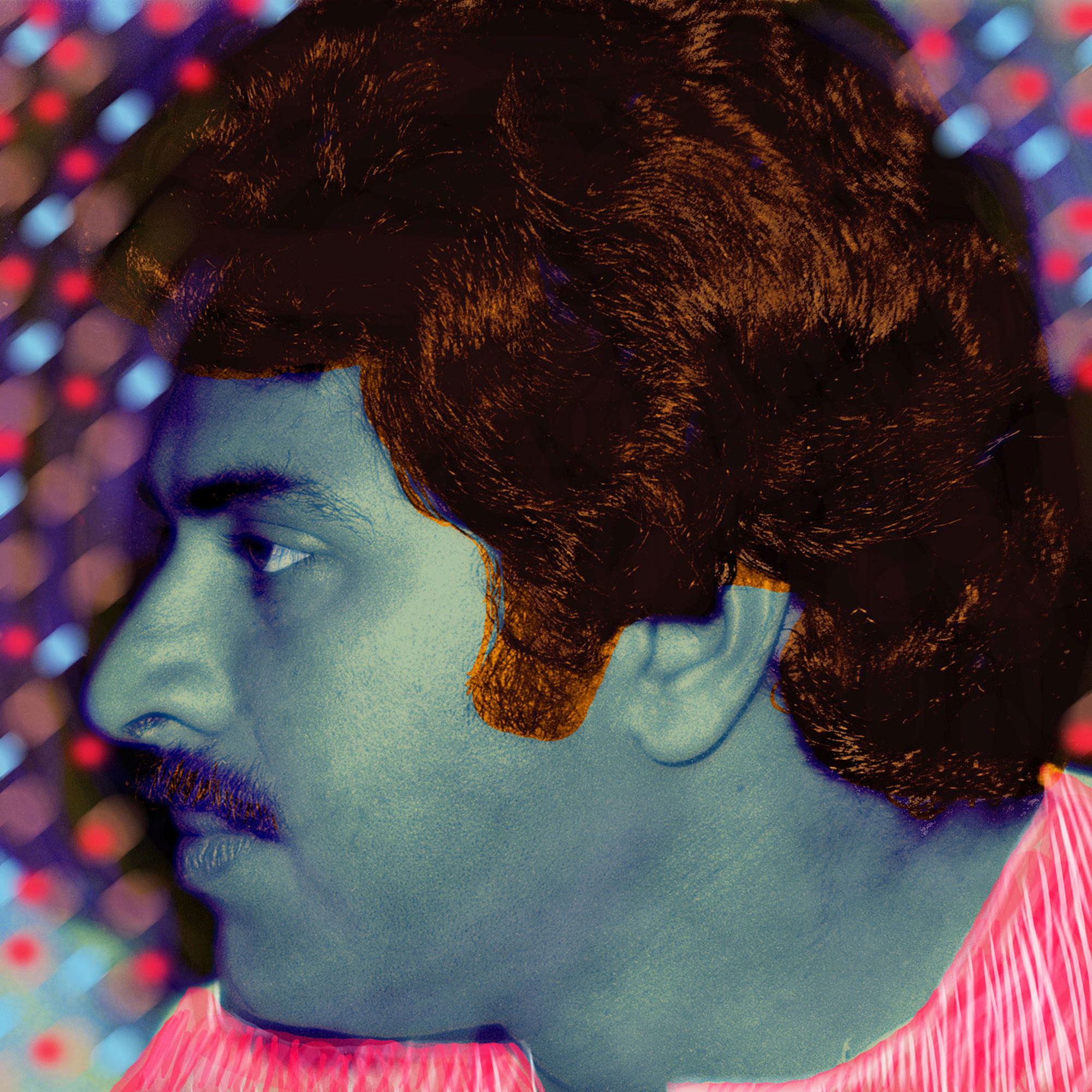
The Meeting of Two Legends – MGR and Mammootty
From the erstwhile Madras, on the inauguration day, MGR arrived at the Cochin old airport, and I was there to shoot him. As a big fan of MGR, obviously one among the millions of MGR lovers, I cherished my fascination to meet and shoot him. A master performer who excelled in playing fashionable, romantic, globetrotting and adorable heroes, MGR was unique by all standards. As most of the journalists and photographers took images of his arrival and left, I decided to stick around.

Crows: Photographing the Familiar | Abul Kalam Azad
Photographs can make familiar objects, places, and people more familiar. Everyday mundane encounters and banal objects, when photographed, instill an interest in its viewer to observe the ignored. For, when we look at familiar objects, again and again, it reveals something or the other that was not seen during the first instance.
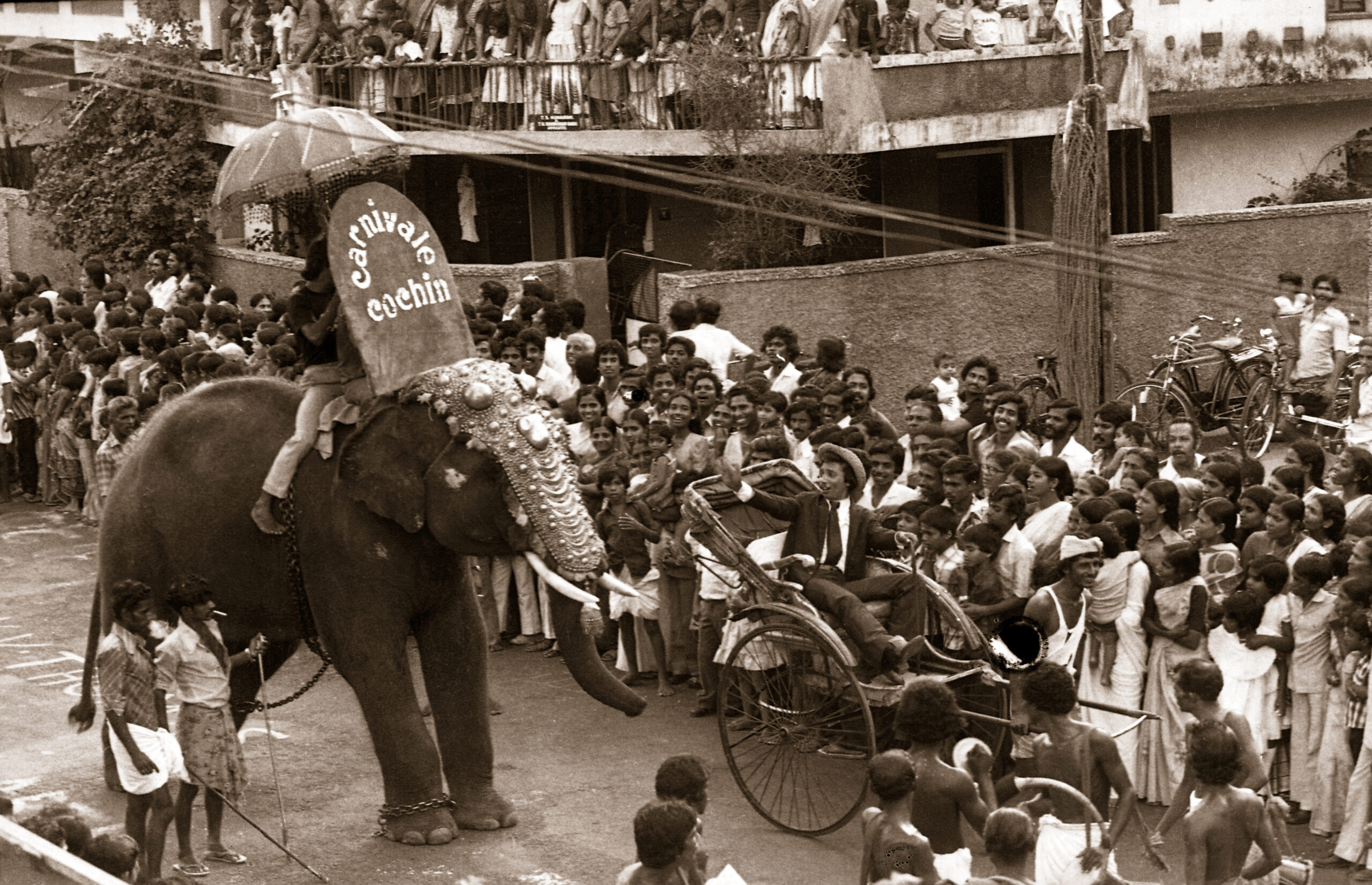
Huge and Historic: On the First Cochin Carnival
After my father’s demise, I stumbled upon a few negatives he had preserved along with some valuable documents. It was amidst this, I found a few strips of the negatives of the Carnival Parade 1985 (The First Cochin Carnival), the culminating event of the year-long Beach Festival (1984-85). The origin of the Cochin Carnival is a lot more straightforward than what is being popularly narrated today. It began as a celebration of the UN Declaration of 1985 as the International Youth Year. Such a remarkable cultural event was made possible in Kochi thanks to its rich cosmopolitan history.
Microhistories of Unsung Heroes
Of all the artists I met at Kalapeedam, Chicku was closest to me, as there were many things common between us. Chicku was also a drop-out, self-taught, and nomadic. By nature, he was timid and tranquil. Most of his works were surrealistic animal and plant forms. For his study, we spent several days trekking and exploring the forests and mountainous regions of South India. A wonderful painter with unmatchable skill and capability, Chicku brought out his artistic expression with a lot of rebellion and originality.
Hitchhiking Days
Most of the Indian photographers learned from their foreign masters and hence, their styles continued to dominate Indian photography. They were either voyeuristic visual trophies that professed, “I had been there, seen that, met him”, or a tool that propagated “top-down let’s-look-at-the-suffering” sort of charity or propaganda of the photographer/client.
Mattancherry: My Cosmopolitan Hometown
Mattancherry has been a microcosm of authentic cosmopolitanism, many ethnicities and faiths coexisting together, with its beautiful contrasts and combinations. I grew up there, in one of its small boroughs called Kochangadi. This Muslim dominated waterfront settlement had – and still has – a few Jewish, Ezhava and Christian families. Apart from a synagogue and a few churches, there are several small and big mosques that belong to different ethnic groups or factions of Muslims.
Sepia Tinted Memory
Our family name is Pattanam, an acronym for the Tamil word Patthanathukarar (which means ‘hailing from a port town’). We could have been from one of the earliest seaports of Tamilakam (the region corresponding to the present South India) such as Kaveripoompatanam (Chola Port Pukar) or Kayalpattanam (Pandyan Port Korkai). Trading took my forefathers to different parts of Tamilakam and they eventually settled in Mattancherry.


